Increase Profits by Creating Systems in Your Company
Let me ask you a personal question. When you wake up in the morning and you get ready for work, do you always do things in the same order?
Here’s what I mean: When I wake up on a weekday, I do the same tasks in the same order, every time. I first grab my phone to look at the weather and see what I have scheduled for the day. I then take a shower and dry off, use Q-tips in my ears, put deodorant on, put my contacts in, brush my teeth, fix my hair, get dressed and head out the door.
I do the same routine every time and don’t even think about it. In fact, my mind is on the day ahead. I’m wondering if we got that inspection, allowing us to pour concrete, and if all of our drivers are going to show up today. I’m trying to decide which guy we can move up to be a wall foreman. I’m thinking about how we can reduce our labor costs. I’m reminding myself to follow up on that estimate we sent out. And on and on.
I was not thinking about how much toothpaste to put on the toothbrush. I did not have to remember to scrub my armpits while taking a shower. All of those things happened automatically because I made a system out of getting ready for work. I made a repeatable process from my morning tasks of getting ready for work. Because of that, I do the same thing every day and never miss a task. In fact, if I took a video of my morning routine (which, I know, nobody wants to see that), I bet I would wash my hair, apply deodorant, and brush my teeth with almost the exact same number of movements.
And my guess is, you do the same thing. You have a specific routine every morning that you do like clockwork. And, you are thinking of a whole bunch of other things while you are doing it. You, too, have a system for getting ready for work in the morning.
So, what if you had systems like this in your business that your people followed every time? What if you had processes in place where tasks were done the same way, no matter who did them? Would that make you more productive? Would that eliminate costly mistakes? Would that allow you to delegate some of your work to other people? Would it make you more money? It certainly would!
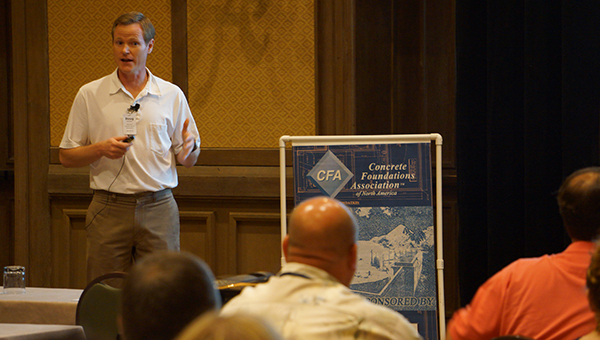
Doug Herbert brings a powerful sales and marketing focus to Concrete Foundations Convention, speaking on “Increase Profits by Creating Systems in Your Company” – Zermatt Resort, Midway, UT – July 19-21, 2018
This summer at the CFA Convention in beautiful Midway, Utah, I will be giving a presentation: Increase Profits by Creating Systems in Your Company. During that presentation I’m going to show you how to create systems in your company.
Having systems in your business allows you to:
- Increase productivity
- Reduce mistakes
- Ensure things are being done the right way every time
- Grow your company and get to the next level
- Increase profitability
- Delegate some of your work to others in the company
- Have more time to do other things (like see your kid’s ball game)
You will walk away from my presentation with a clear understanding of how to implement systems in your concrete construction business.
Here are some of the things you’ll learn:
- How to identify what areas of your company can benefit the most from having a system
- Specific steps required to build an effective system in your business
- How to implement each system for the best results, with buy-in from everyone involved
- A way to establish a follow-up process to make sure new systems stay in place
This is the same presentation that the World of Concrete organizers have hired me to do several times, with my largest audience there being exactly 300 people. However, this is a new and improved version of my World of Concrete presentation, one that I’ve created just for the attendees of the CFA Convention.
If you’ve wanted to come to the Convention before but you just didn’t think you could be away from your business for that long, that is probably a sign that you don’t have systems in place that let people know what do to when you aren’t around. You need to have your business set up so it can run without you for at least a few days. You can do this by having systems in your business. If you come to the Convention, I can show you how to set up these systems in your business.
There will be many great speakers at this event who you and I both can learn from. But the best part of the CFA Convention is that you get to talk with other concrete contractors just like you. They experience the same challenges and problems that you do every day. And some of them have come up with some great ways to fix those challenges.
Every time I go to a CFA event, I learn things from other contractors that I take back to my business and profit from. You will do the same thing…but only if you attend! So, don’t delay. Don’t procrastinate. Don’t wait and see if you’ll be able to swing it. Just sign up today. Book your room. Get your flights. Discuss the trip with your family; and do your best to make it happen! Trust me, you’ll be glad you did.
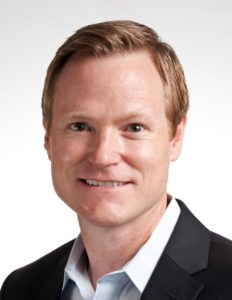
Doug Herbert is President of Herbert Construction Co., one of the largest residential concrete contractors in the southeast. Doug is a regular presenter for the CFA and World of Concrete. He is the Founder of ProfitableContractor.com where he shows concrete contractors how to reduce their costs and increase their profits with effective sales and marketing systems. Reach Doug at Doug@ProfitableContractor.com
Dealing With the Reactivity of Aluminum Forms and Concrete
By Destry Kenning, Forming Market Segment Manager, Nox-Crete Products Group
Part 1 of a 4-Part Series
Anyone who has placed concrete against new or older reconditioned and not properly seasoned aluminum forms is most likely familiar with the veins or worm-like trails that form in the resulting concrete, and also familiar with the excessive concrete buildup that occurs on the form surfaces. These problems occur because the elemental aluminum present in the aluminum forms is very reactive with the cementitious materials in concrete. Unfortunately, these problems typically continue for three or four additional pours, and possibly even longer depending on the method used to deal with buildup on the form surfaces.
As mentioned, elemental aluminum reacting with the cementitious materials results in concrete buildup on the form surfaces. This buildup occurs because of shared chemical bonds between the aluminum and the cementitious materials. These chemical bonds are different and much stronger than the physical bonds that might result if, for example, no release agent is used on a nonreactive form surface. Concrete buildup as a consequence of chemical bonding is much more difficult to remove than buildup from a physical bond.
Another effect of this reaction is the presence of hydrogen gas, which creates bubbles on the formed, freshly placed, concrete surfaces. By migrating upward and escaping out of the top of the wall, these bubbles ultimately create the all-too-familiar veins or worm-like trails. It is important to note that the hydrogen gas bubbles are not likely to form bugholes in the concrete like those caused by entrapped air. Hydrogen gas bubbles weigh much less than the air we breathe and therefore tend to migrate up the wall much easier than does entrapped air.
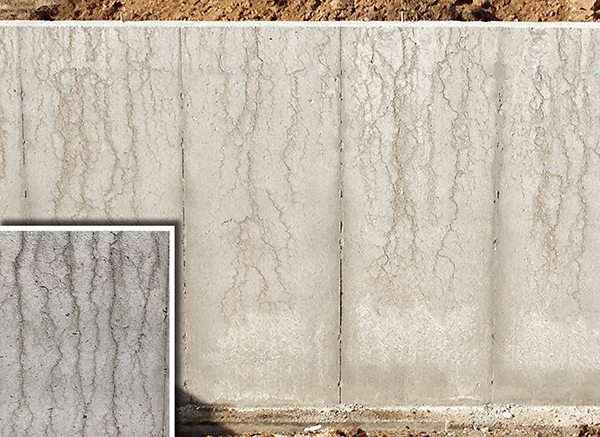
Elemental aluminum reacting with the cementitious materials in concrete produces hydrogen gas, which causes veins or worm-like trails in the surface of the concrete – Photos courtesy of Precise Forms Inc. and Carroll Construction Supply/Dalaco.
There are steps you can take to prevent these problems. One option is to apply some type of resinous coating on the aluminum form surfaces.
A heavy coating or application will create a barrier between the aluminum form surfaces and the concrete, eliminating the potential for a chemical reaction between the two. However, the coating will ultimately succumb to the abrasion and scratching that occurs during the handling and transport of aluminum forms, and to the abrasion caused by repeated concrete pours against the form surfaces. Reapplication of the same coating becomes far more challenging because the remainder of the existing coating typically needs to be removed, along with any concrete buildup or form release agent residual that might interfere with the adhesion of the second coating application.
A thin coating or application is sometimes suggested. There is the understanding that it will wear out fairly quickly, but it has the advantage of minimizing the amount of elemental aluminum that can react with the concrete in any one pour. The idea is that this will reduce the amount of concrete buildup on the form surfaces and surface irregularities in the poured concrete.
Unfortunately, both coating methods are little more than temporary solutions, as they do not mitigate the underlying reactivity of the elemental aluminum. Once the coating is gone, the same problems remain.
A more effective method for dealing with the elemental aluminum is to make it react with something in advance to prevent or greatly minimize any further reaction when concrete is placed against the form surfaces. The idea is to convert the elemental aluminum on the form surfaces to aluminum oxide, a process typically done with an alkaline solution or slurry. This process is frequently referred to as “seasoning.”
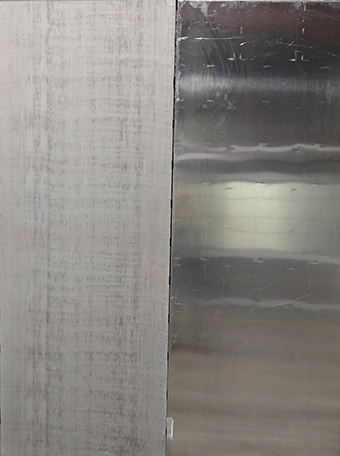
Seasoned aluminum form on left, unseasoned on the right – Photo courtesy of Precise Forms, Inc.
One seasoning method is the field application of a lime slurry. Contractors have been doing this for years; however, this method has been met with mixed results and is far from 100 percent effective in dealing with the aluminum reactivity.
An alternative and more effective option than the traditional lime slurry, is to utilize a product that is specifically designed for the aluminum form seasoning process. These proprietary products are also field applied, but they are typically more reactive than lime and therefore more effective in converting the elemental aluminum to aluminum oxide. To ensure positive results, some of these products also contain cleaning agents that remove mill oil or grease frequently found on new aluminum forms.
Even though these proprietary products perform much better than the traditional lime slurry, they are still not 100 percent effective. Also, as with the lime slurry method, these treatments will need to be combined with highly reactive form release agents for the first few pours to achieve the best results.
Temperature sensitivity is an issue for both the traditional lime slurry and the proprietary products. If the form temperature drops below 70° F, the effectiveness decreases. By the time form temperatures are in the 40s, the results are typically poor. This does not necessarily mean that you cannot complete the process at air temperatures below 70° F. In fact, the form temperature is more important than the air temperature. If the forms are laid out in direct sunlight, they will typically heat up well beyond the air temperature in a short period of time.
The final method for seasoning involves the submersion of the entire form in a tank filled with a proprietary product specifically designed for the seasoning process. This method requires great care and understanding of the process, as it is quite hazardous and could easily result in form damage or worker injury. For these reasons, this process is generally done by the aluminum form manufacturers in a controlled environment. That said, there are only a couple of aluminum form manufacturers that actually offer this service.
Of the three seasoning methods described, the dip tank method is the most effective for seasoning aluminum forms, but it also typically costs the most. The dip tank method should be followed by the use of a highly reactive release agent for the first few pours, to complete the seasoning process.
Regardless of the seasoning method used, it is always a good idea to use a highly reactive release agent and a low alkali content concrete mix for the first few pours. A low alkali concrete mix can be achieved with a low alkali cement and/or through the use of certain mineral admixtures, such as Class F fly ash. Local ready mix concrete producers should be able to assist the contractor in meeting this requirement.
During the first few pours after the forms are initially seasoned, it is good to avoid the use of calcium chloride in the concrete. Also, next-day form stripping in cold weather conditions should be avoided.
Lastly, the aluminum oxide layer that develops on the aluminum form surface during the seasoning process is very thin and somewhat delicate for the first few pours. Accordingly, extra care must be taken during these initial pours to prevent excessive abrasion and scratching during concrete placement against the aluminum forms, as well as during the handling and transport of the forms.
For more information about form seasoning, please visit www.nox-crete.com or contact Destry Kenning at DKenning@nox-crete.com or 402-504-9232.
Letter from the Director – It’s Convention Time!
IT’S CONVENTION TIME!
The flurry of emails, the flashy new mailer, the social media blitz and even the new App signal that it is Convention time. In actuality, it is never not Convention time around this office. Convention is what we think about all year long. We begin planning next year’s
event even before we have the content solidified for this year. We negotiate with hotels and venues sometimes three years out in order to secure the right space and number of rooms to insure cost-efficiency and our presence on site. In the end, Convention remains the single largest reason this Association has been successful.
When I think of the conversations that I have had with those not attending, either leading up to Convention or following back from one, the most consistent reason is, “I simply can’t see myself taking off three to four days to have a vacation when we are in the midst of our busiest season.” I get that. I often think about the vacation that I put into the mix each and every year as we head down the stretch toward Convention. And yet, time and time again I hear contractors claim how much more money they made by attending Convention than they would have made by staying home in the grind. Clearly a dichotomy of opinion, and the differing views is a measure of experience.
You simply cannot put a label, a value on or even comprehend taking time for you and your business until you have done it. Once you have, you really can’t imagine why it took you so long to commit to it. Don’t see this as a statement I am supposed to make because my job is to promote your event — it is the real truth. Your mind, your body, your company, your crews, and even your customers stand to gain from a commitment to taking some time off. When I unplug for a week each summer, it is my chance to recharge my commitment to you, this Association, and this industry. When you accept the challenge or take the risk of getting on a plane Wednesday afternoon or Thursday morning, flying to Utah for our Thursday night kick-off bash, you are setting the stage for investing in your business like never before, as well as finding a place to recharge your own batteries. We take care of the relaxation and stimulate different ways of thinking while you contribute much of the content and the value by sharing with each other.
As summer starts into the fullness of its swing, if you are reading this as a CFA member with years of experience, one of our newest companies to join/rejoin or you are one of the thousands of industry participants to whom we send this magazine free of charge, my wish for you is that you will take a risk right now. Don’t put your company on hold; put it in the hands of those you already trust each and every day to run things the right way. They will be stronger because you have shown them your confidence. You will be better because “iron sharpens iron.” Your company will realize newness in ways you have never stopped to imagine.
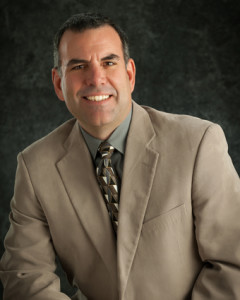
CFA Executive Director, James Baty | jbaty@cfaconcretepros.org
Letter from the President: Times, They Are A Changin’
I have attended meeting after meeting over the last few years and the two things I hear most often are:
- How different all of our markets are
- How much effort employers spend making their office more efficient
Everyone’s market, no the matter location, is essentially the same. The real difference lies in the portion of the market that different companies choose to position and promote themselves in.
When was the last time you put the same amount of effort into examining and improving your field operations as you put into your office operations?
It seems when things go astray in the field we tend to blame people when, in reality, some of the problem may be in the process. Each one of us should spend a week in the field listing every little thing our crews do and the amount of time it takes for them to do it. This would include things we may think are insignificant.
“If you are willing to do more than you are paid to do, eventually you will be paid to do more than you do.” (anonymous)
Wall Forms:
Let’s take a look at setting wall forms. List out the time it takes to:
- Clean panel edges
- Build corners
- Walk the panels to where they are needed
- Put in pins and wedges
- Look for fillers
- Put in double fillers rather than one large filler
- Place the concrete (and consolidate to the required finish)
- Strip panels
- Walk panels and fillers again
- Etc., etc.
You may have useful realizations. For example, you may realize you already paid for a new set of panels with the time lost due to the inefficiency of utilizing old panels.
Now, let’s look at material handling procedures. If you reduce the size of panel cages, it will allow for an increase in reach with the same weight capacity boom. This will decrease the amount of time spent walking panels to and from the cages. The ability to load smaller cages on the outside of the foundation saves you from pulling panels over the top of the wall, and from the liabilities incurred with working on the top of the wall.
Consider, on larger jobs, putting a skid steer with forks on site to move forming materials around on the site.
Flatwork:
Does high range water reducer reduce the number of people required to place flatwork?
Does it reduce finish time?
Do you still finish edges by hand when power edgers are available?
Rebar:
It may be much more cost effective for one person to fabricate rebar in the shop rather than multiple people fabricating it in the field.
Crew Trucks:
Are all crew trucks organized differently? They should all be organized alike if they are being used for the same purpose. This will avoid “looking for spoons in the pots and pans cabinet.”
Shop/Warehouse:
Are these areas organized in an order where even a stranger could easily find an item for you with little instruction? Is everything always put back in the same place?
These are only a few examples of the areas and types of things you may want to look at. Perhaps you can come up with other ways to be more time- and cost-efficient.
When examining functions, you may say, “It only takes a few seconds. But seconds turn into minutes and minutes cost money, too.” Look at every function with the attitude that believes there is a way to be more cost-effective. The task of finding a better way may include a CFA member hotline topic, or a phone conversation with another contractor or Associate member. One way I found effective was to visit another contractor or Associate member’s facility.
We often think that our existing procedures are the most efficient ones to use, and that it would cost too much to change our procedures or buy more efficient equipment. However, by increasing organization and utilizing more efficient equipment, it is possible to reduce labor that can never be recovered or turned into profit. Organization is the key to profit and success.
I hope that at least one of the experiences I have shared over the last two years of President’s Messages has been of some value to you. It has been an honor and a privilege to represent such a great organization and its membership — a privilege that I will always be thankful I had the opportunity to have. In July, Phil Marone will become your new president. I am looking forward to Phil’s leadership and wish him the best.
I would like to thank the CFA Staff, CFA Board, and all CFA Members for the support I have received over the last two years.

Sincerely,
Dennis Purinton
Purinton Builders, East Granby, CT
CFA President 2016-18
Herbert Construction Becomes Georgia’s First CFA Certified Contractor
FOR IMMEDIATE RELEASE
May 29, 2018
Herbert Construction Company Becomes First Certified Foundation Company in Georgia
Mt. Vernon, Iowa – Concrete foundations constructed in the state of Georgia will now be produced by the state’s first CFA certified foundation company, Herbert Construction Company based in Marietta, Georgia. “Certified Residential Foundation Company” is a program rating established by the Concrete Foundations Association, headquartered in Mount Vernon, Iowa, www.cfaconcretepros.org, offering third-party quality assurance for professional concrete foundation companies.

Drone image of private residence recognized as 2015 CFA Project of the Year by Herbert Construction Company of Marietta, Georgia.
Recognizing the need for a national program to establish a consistent base of knowledge and quality assurance for the cast-in-place concrete foundation industry, the Concrete Foundations Association™ of North America (CFA) created the Certified Residential Foundation Company over a decade ago. The program recognizes certified companies in the states of Missouri, Iowa, Pennsylvania, Illinois, Maryland, Nebraska, Wisconsin, Virginia, North Carolina, Ohio and now Georgia.
“The Certified Foundation Company program was an ideal extension of the Certified Residential Foundation Technician that is offered through the American Concrete Institute,” states Jim Baty, Executive Director for the CFA. “Introduced in 2007, the technician program established a grueling examination of the knowledge base for understanding the codes and standards that shape the minimum requirements for today’s residential concrete foundations. However, having a person on staff or even multiple project managers that knows the important sections of code documents was just the start. This industry needed a recognizable standard for operation of a quality foundation company.”

Herbert Construction became involved early on in the program as company President, Doug Herbert, participated in the formation of the market development package offered to companies achieving the benchmark. The aggressively growing economy set the wheels in motion for the company to follow up on its original intent to become a certified company. “It became increasingly important and eventually essential for us to show our region that we are serious about our foundations and this program,” states Doug Herbert. “I became an ACI/CFA Certified Technician several years ago and all along it has been my intent to have the company follow suit. This shows our current and future customers that we are committed to being the best company that we can be. We’ve put in a considerable effort to become a Certified Residential Foundation Company. Our employees are what makes this certification possible, and we believe this will set our company apart from other construction companies as we continue to hire great people to join our company.”
Company certification was the obvious next step in Herbert Construction’s consistent involvement in the CFA. From their multiple awards in the CFA’s annual Projects of the Year competition, to their leadership and involvement in the association’s Board of Directors. That was instilled in the second generation, family-run company early on from founder and CEO, Barry Herbert, his daughter and V.P. for the company, Amanda Morris and now Doug Herbert. A member of the CFA since 1992, the process to become a certified company forced the family to look deeper into their processes, understanding their safety culture and identifying new ways to step forward in their commitments. “Certified companies must prove their safety programming, commitment to workforce safety and performance, financial stability and quality of relationships,” states Ed Sauter, CFA Manager for Certification Programs.
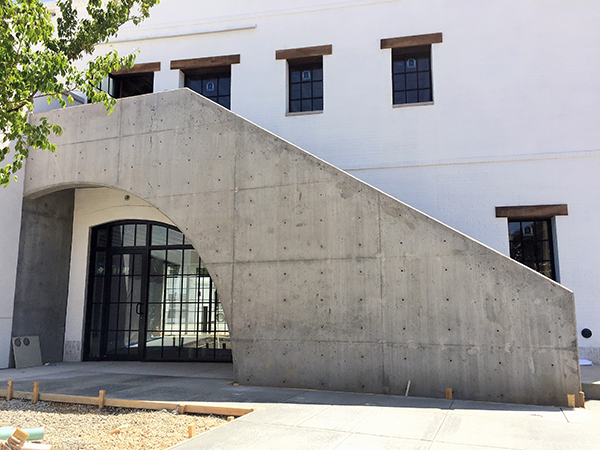
Howell Mill, architectural concrete entrance wall recognized as a 2016 CFA Project of the Year, one of many by Herbert Construction Company of Marietta, Georgia.
“I’m quite proud of the statement this certification makes to our company culture and to our customers,” states Barry Herbert. “Our goal has always been to commit ourselves to leadership through our processes, our relationships and our performance. We are very pleased to have been through this process as it demonstrated just how much we already knew about our company but also some new ways to improve our processes and our commitments.”
For more information on Herbert Construction Company, please contact Doug Herbert at (770) 795-0103 or visit their website, www.herbertconstruction.com.
For more information on the CFA, please contact James Baty, Executive Director at (319) 895-6940, jbaty@cfaconcretepros.org or visit the Association’s website at www.cfaconcretepros.org and go to keyword Certification.
For more information on the American Concrete Institute and their individual certification programs visit their website, www.concrete.org.
Further information, including electronic files, logos and photography, is available from Lindsey Bloomquist, Manager of Communications and Networks for the Concrete Foundations Association, lbloomquist@cfaconcretepros.org | (319) 895-6940.
CFA Hosts Rocky Geans Construction Business School
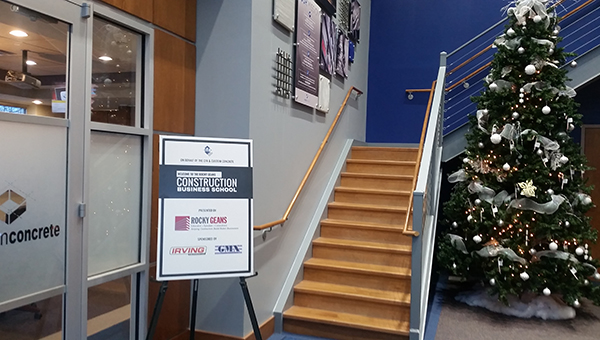
The arrival lobby at Custom Concrete, Westfield, IN – host for the 2017 Rocky Geans Construction Business School by the Concrete Foundations Association
December 12th to the 14th was an interesting new stretch for the CFA. A new education partnership to benefit the concrete contractor member of the Association was crafted with industry motivation expert, Rocky Geans. Rocky is a name many will recognize with familiarity having attended seminars at World of Concrete or stayed current with articles published in key trade magazines relevant to the concrete industry. The Construction Business School is a new venture for this concrete contractor as he enters the next phase of his career. “I had a great career as a concrete contractor,” states Geans. “It was time to move on though, and I wasn’t ready to leave the industry. Concrete is my passion and I really enjoy meeting other contractors, talking about their business and passing along any pieces of advice from my career that might impact theirs.”
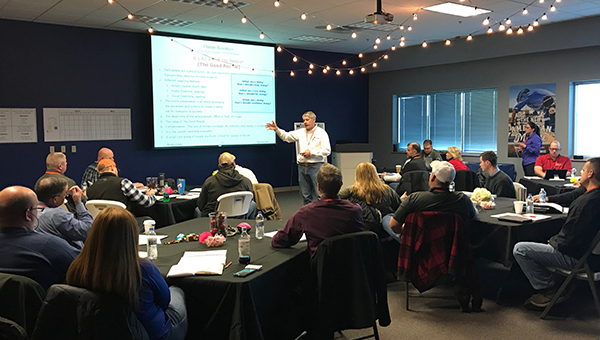 This is precisely what thirty-five people attending the CFA’s offering of Rocky’s school found. Custom Concrete in Westfield, IN offered their facility and training room as the host for this event. Beginning the evening of the 12th, registered attendees met up for a reception at Noble’s Pizza and had a great time getting to know Rocky, meeting many new faces and catching up with some old acquaintances. On Thursday morning, the short walk or drive to Custom’s location was met by a tremendous staff and a gracious welcome. Through the next two days, Rocky’s curriculum immersed every attendee into the challenge of comparing systems, management styles and cultures to that of the Custom Concrete framework laid out all around and the contents of this course.
This is precisely what thirty-five people attending the CFA’s offering of Rocky’s school found. Custom Concrete in Westfield, IN offered their facility and training room as the host for this event. Beginning the evening of the 12th, registered attendees met up for a reception at Noble’s Pizza and had a great time getting to know Rocky, meeting many new faces and catching up with some old acquaintances. On Thursday morning, the short walk or drive to Custom’s location was met by a tremendous staff and a gracious welcome. Through the next two days, Rocky’s curriculum immersed every attendee into the challenge of comparing systems, management styles and cultures to that of the Custom Concrete framework laid out all around and the contents of this course.
“This is the first time I have spent this length of time thinking only about the way I run my business,” stated Daryl Knoerdel of Knoerdel Foundation Specialists, Georgetown, PA. “I feel like I’ve got a long way to go but I was also encouraged by seeing steps that I can take now.”
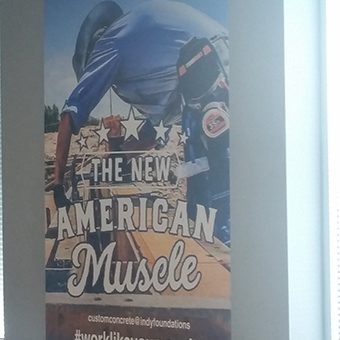
The atmosphere for the school was set by the positive attitude of the Custom Concrete Education Meeting Space
Rocky recognized more than one face in the audience and asked Mary Wilson of Michel Concrete, Springfield, IL toward the end of the class how she felt after sitting through it the second time around. “When I signed up for this class, I started feeling guilty, questioning whether I had done anything with the investment I made in the last one,” stated Wilson. “While I was reminded of a lot more we have to do and was given more great things to think about, I was surprisingly satisfied with many of the little things we have already implemented. Having my husband along this time to give us two minds absorbing and thinking of ways to make changes will be all the better.”
“It was a real pleasure to host so many CFA members to our facility at one time,” stated Brad Schrock, Chief Operations Officer for Custom Concrete. “We had a chance to get many more of our people invested in the event, meeting other CFA members and really getting a sense of the value this Association has to our operation. No matter how refined a company is, we know there is always more that we can do to make us even better.”
CFA is committed to bringing two more chances for the Rocky Geans Construction Business School in the second half of 2018. Stay tuned to the Events Calendar at www.cfaconcretepros.org and your email for notifications.
Safety Really Is Job #1
by Levi Schrock, chair of CFA Safety Committee
Throughout the years, safety has been a subject of conversation at the CFA. We confess, however, that it has usually been brought up as a reaction to a hot topic posed by OSHA. Today, we hope to be advanced enough in our thinking to be talking about safety long before OSHA comes up with a relevant rule, or before one of our members gets cited, or before our association has to look at insurance options. We now recognize that safety needs to be prioritized in the same ranks as accounting strategy, production growth, new business ventures, advancing technology, human resourcing best practices, ownership structure, and all other important areas in a business. We propose a radical way of not just “doing” safety but being inherently safe.
But how does a residential foundation construction company learn safety’s best practices for our industry? In America today, we do not see published writing on safety in our industry at all, much less helpful advice. Sure, we have OSHA like everyone else; but the truth of the matter is that the strategies and techniques on how to best implement and grow in safety in the residential foundation construction market are not widely known (much less communicated).
For starters, the CFA overhauled and rebooted our safety committee in the fall of 2017, asking company leaders to put together a board of safety professionals from within our membership (not another industry). This diverse group has been taking a hard look at “OSHA’s Recommended Practices for Safety and Health Programs,” and they are putting a CFA spin on how these practices relate to companies in our industry. Wouldn’t it be refreshing to read an intensive “safety’s best practices” guide that was designed with only our industry in mind? Since such a document does not properly exist (we hope one is out there, but if there is, we cannot find it), we decided to make our own.
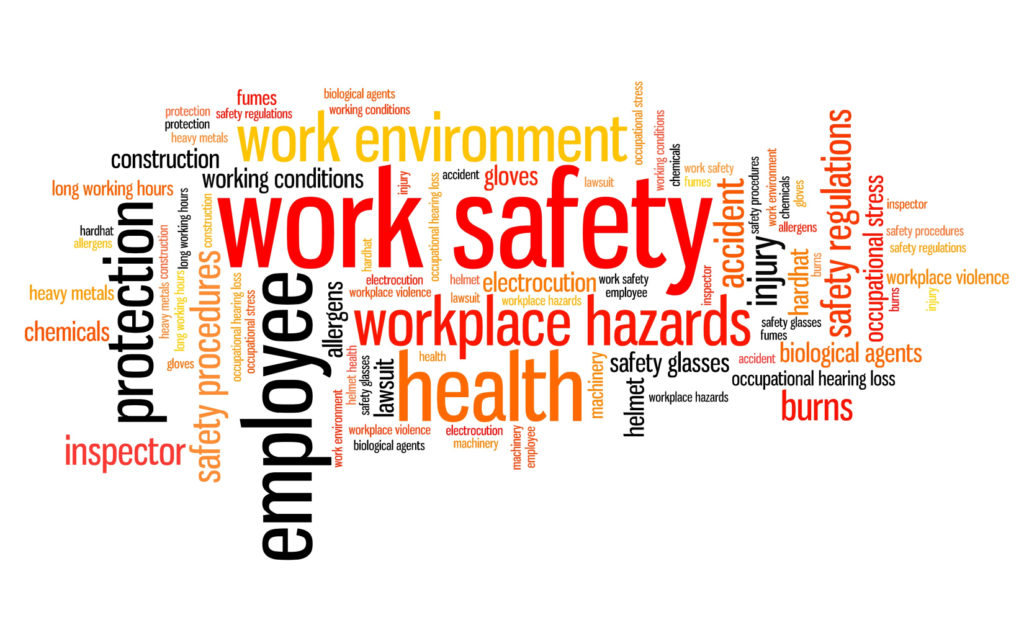 Necessity is the mother of invention, but all too often we only see necessity too late. The best businesses will see a problem before it has arrived and proactively change processes to avoid that problem. Businesses that wait to deal with the negative consequences of poor safety are either doomed to fail or lucky to survive. However, if we know ahead of time that poor safety performance will absolutely result in such dire consequences, why do so many of us put off safety precautions? Let’s be honest: Is safety a true consideration when injuries are down, insurance is happy, and OSHA is not interested in your business? For most companies in our industry, ownership is too busy dealing with other “emergencies” from everyday business to be concerned with average safety performance. To our own dismay, we often misinterpret the effectiveness of consistently dealing with safety. Similar to the prospect of “buy low, sell high,” safety needs to be a priority when it is not a hot topic, not only when it is what everyone is talking about – having this shallow view on safety will rob you of the greatest rewards that safety can offer your company. We want to show you what these great rewards can be.
Necessity is the mother of invention, but all too often we only see necessity too late. The best businesses will see a problem before it has arrived and proactively change processes to avoid that problem. Businesses that wait to deal with the negative consequences of poor safety are either doomed to fail or lucky to survive. However, if we know ahead of time that poor safety performance will absolutely result in such dire consequences, why do so many of us put off safety precautions? Let’s be honest: Is safety a true consideration when injuries are down, insurance is happy, and OSHA is not interested in your business? For most companies in our industry, ownership is too busy dealing with other “emergencies” from everyday business to be concerned with average safety performance. To our own dismay, we often misinterpret the effectiveness of consistently dealing with safety. Similar to the prospect of “buy low, sell high,” safety needs to be a priority when it is not a hot topic, not only when it is what everyone is talking about – having this shallow view on safety will rob you of the greatest rewards that safety can offer your company. We want to show you what these great rewards can be.
Our safety committee will soon be publishing a work that will include a walk-through of OSHA’s guidelines for having a safety program, tips from some of our company’s more successful safety ideas, and even some lessons that have been learned the hard way (which will hopefully help you avoid some of the issues we have run into). The amount of information from one company may be good, but when we combine the CFA’s resources from our diverse membership and experiences, we find a wealth of knowledge that needs to be shared. To give a practical example of the kind of information that will be offered in the safety guide, here’s a sneak peek into the kinds of ideas we are compiling:
Be Present in the Doc’s Office: Continuing with the thought of knowing your doctor well, you should know the visit well, too:
“For this one you need to really have the trust of the doctor and the trust of the injured employee, and even if you do have the trust of both, you should ask permission every single time. However, if you do this right, you can be allowed (welcomed, even) to sit in on the injured employee’s doctor visits. This was huge for our company. I usually sit completely quiet in the room. In this scenario, I hear the doctor/patient conversation firsthand, and know for myself exactly what was said. The employee must stick with this story now and should the doctor’s paperwork look anything different from what I hear the doctor say in the visit, I can call and have it corrected. Also, the employee is now put in a spot where s/he must tell the doctor what s/he has told me. For instance, I once had an employee complain of back pain. When I took this employee to the doctor and sat in on the appointment, this employee went on and on about pain in his knee and elbow. This not only opened my eyes to foresee the motive this employee had in going to the doctor, but it made it infinitely easier to prepare for (rather than if I would have heard this from the doctor later and then tried to pick up the pieces). I’ve also found that being in the doctor visit I can give all the necessary work comp/company info that the employee doesn’t know, which makes the paperwork way easier later. And finally, I’ve been able to help bridge the gap in understanding regarding the work we do. The doctors have a difficult job, and when a wall worker has to explain what s/he was doing when the injury occurred, the physician just has to interpret the work the best that s/he can. When I am present, I can usually explain the job process and how it makes sense that the employee was injured doing a particular duty (which can help the doctor diagnose what the problem might be). I won’t pretend this strategy doesn’t have a downside, but there are many reasons as to why it is beneficial to invite yourself to these doctor visits.”
This excerpt is an example of what we will be providing to help educate our members. Everyone has a story or an idea – this safety guide holds great power in bringing many of these thoughts and stories together.
Whether safety is a thriving aspect of your company’s culture or is still in its infant stages, stay tuned to see what the CFA safety committee will be producing in mid-2018. To that note, never hesitate to ask safety questions of the CFA. We don’t pretend to be all-knowing, but through collaborative group efforts our members have likely encountered some useful answers for most questions you may have. We look forward to a safer 2018 with this renewed focus in mind.
Tricks of the Trade: “Droopy Tie Syndrome”
from Dennis Purinton, Purinton Builders, East Granby, Conn.
This issue’s Tricks of the Trade is shared by a CFA member (the current president) in the spirit of continuing to share great ideas and to challenge you, the reader, to consider the ways you overcome annoying details and situations to be more effective and economical in your work. If you are from an active CFA member company and your trick is selected for publication, your company will have 50 points placed into your account for Member Rewards, redeemable for your CFA transactions. If you are from a company that is not a member, we will offer you a $100 discount on your first year’s membership fees — a great way to get to know the CFA.
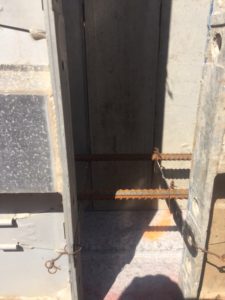 More and more it seems that our projects are requiring a change to be made at some point nearing the end of forming, requiring us to open up a section of formed wall. Has this ever happened to you? Maybe the customer has decided that he/she wants to add a window to a particular section of the wall or change the size of the opening to a regulation egress condition. Sometimes the builder identifies the need for additional utilities (or the utility plan information does not arrive on time), where a sleeve is now necessary. There are also those annoying times when a member of your crew inadvertently drops something into the wall. Whether that coffee cup or soda can will be noticed or not, they don’t make quality aggregates and our position is to have the formed condition cleaned immaculately for inspection. There are even those times when we have been required to add reinforcement during an inspection.
More and more it seems that our projects are requiring a change to be made at some point nearing the end of forming, requiring us to open up a section of formed wall. Has this ever happened to you? Maybe the customer has decided that he/she wants to add a window to a particular section of the wall or change the size of the opening to a regulation egress condition. Sometimes the builder identifies the need for additional utilities (or the utility plan information does not arrive on time), where a sleeve is now necessary. There are also those annoying times when a member of your crew inadvertently drops something into the wall. Whether that coffee cup or soda can will be noticed or not, they don’t make quality aggregates and our position is to have the formed condition cleaned immaculately for inspection. There are even those times when we have been required to add reinforcement during an inspection.
 No matter the reason, these changes and happenstances result in the necessity of opening up a section of the already-formed wall. When you pull that form panel(s) out, whether it is a full or filler, the ties between it and the adjacent panels are likely to fall out of position. Some form systems have just enough of a notch to position them back in place while you carefully reinsert the panel. More than likely, however, the multiple vertical ties at each seam are not easily held in place, and then there are those sitting between two removed panels as well.
No matter the reason, these changes and happenstances result in the necessity of opening up a section of the already-formed wall. When you pull that form panel(s) out, whether it is a full or filler, the ties between it and the adjacent panels are likely to fall out of position. Some form systems have just enough of a notch to position them back in place while you carefully reinsert the panel. More than likely, however, the multiple vertical ties at each seam are not easily held in place, and then there are those sitting between two removed panels as well.
During a recent shared experience with a crew from Bartley Corp that came to help me on a project, I was introduced to this trick to resolve the problem, maintaining both efficiency and patience.
- Remove the necessary panels or fillers.
- Add or remove accessories, trash or design components that resulted in needing to remove the panels in the first place.
- Take any thin gauge wire (we use the same twister wire we use for our rebar), push it through the panel tie hole, then push it through the form tie.
- Twist the wire tight, aligning the form tie with the form tie slot in the panel.
- Replace the panel or filler.
- Reinstall necessary pins and wedges.
- Break the wire before trying to strip the form.
Try following these steps the next time you have to remove a panel and see if it lowers the frustration of getting all the ties lined up again quickly, so you can move on. One headache created by your customer or a crew member does not have to throw off the entire day.
Obituary: Mahlon Eash Jr. (1964-2017)
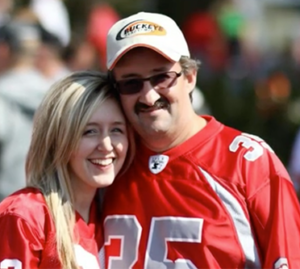 It is with great sadness that we inform you of the passing of longtime CFA member, Mahlon Eash Jr.
It is with great sadness that we inform you of the passing of longtime CFA member, Mahlon Eash Jr.
Mahlon Eash Jr., 53, of Gambier, passed away Dec. 26, 2017. Mahlon was born on May 28, 1964, in LaGrange, Ind., to Emma and Mahlon Eash Sr. He married Erma Gingrich on March 14, 1987.
He was a member of Community Christian Fellowship Church. He was owner and CEO of Foundations Plus Poured Walls.
Mahlon leaves memories to be cherished with: children, Tyanna (Evan) Green of Gambier, Alex (Sammi) of Danville, and Chandler and Mahlon Spencer at home; grandchildren, Lake Daniel, Archer Douglas, and Baby Green on the way; siblings, Mervin (Esther) Eash of Utica, Duane (Nancy) Eash of Gambier, Lorene (Dan) Hochstetler of Utica, Laverne (Sara Kay) Eash of Gambier, Floyd (Linda) Eash of Utica, and Ernie (Janice) Eash of Mount Vernon.
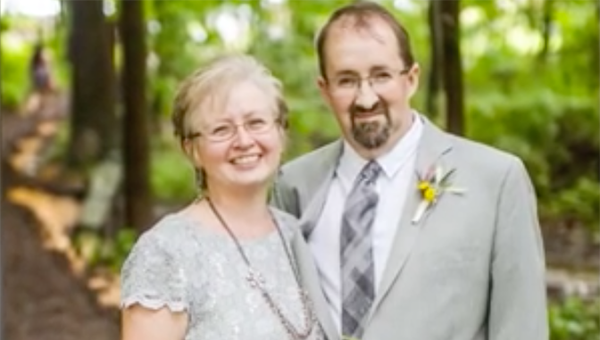
Mahlon and beloved wife, Erma at wedding of their daughter, Tyanna (shown above).
He was preceded in death by his parents, Mahlon and Emma Eash; brother, Dennis Eash; and sisters, Marietta Eash and Karen Miller.
Funeral services were held on Saturday, Dec. 30, 2017 at Lasater Funeral Home.
To offer condolences or to share a memory with the Eash family, visit www.lasaterfuneralhomes.com.
Many of you attending the Concrete Foundation Conventions or the CFA Winter Social in recent years may recognize Mahlon and remember him as always smiling and full of an energetic joy. His spirit for this Association and industry will certainly be missed.
Obituary: Ronald E. Colvin (1943-2017)
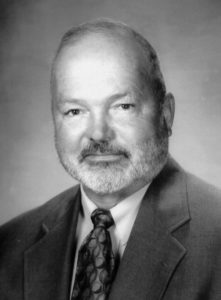 It is with great sadness that we inform you of the passing of longtime member and past president of the CFA, Ronald E. Colvin.
It is with great sadness that we inform you of the passing of longtime member and past president of the CFA, Ronald E. Colvin.
A Berrien Springs icon passed away on Sunday, Dec. 10, 2017: Ronald E. Colvin, known to all as “RC.” He was the first New Year’s baby born on Jan. 1, 1943, in Waco, Texas, to the late Andrew Jackson Abernathy Colvin and Ruth McFalls. He died at the age of 74.
RC graduated from Berrien Springs High School in 1961. RC built businesses and provided jobs for many people in the community.
He could be a generous mentor, helping those who help themselves, and many times, helping those who were helpless. However, he was so much more than a provider for his family and friends—he was our foundation.
RC’s businesses included JC Concrete Inc., JC Waterproofing and JC Conveying, which he grew into this area’s largest residential and light-commercial concrete company over the past 37 years. RC and his wife, Jo, also owned and operated The RoundTable Bar & Grill, which provided a refuge for people to relax, reflect and try to shoot their best game of pool.
RC is survived by his wife, Jo Colvin; sons, Greg (Carlene) Colvin-Garcia, Ron (Michele) Colvin, Brad (Jenn) Johnson and Ken (Danielle) Johnson; daughter, Karen Delgado; grandchildren, Paige Colvin, Garrett Delgado, Jade and Eva Colvin-Garcia, Taylor and Ty Johnson, and Chloe, Tori and Logan Johnson.
RC was preceded in death by wife, Francine Colvin, and grandson, Travis Johnson.
A celebration of RC’s life was held at Allred Funeral Home in Berrien Springs, with a visitation on Friday, Dec. 15, and a funeral on Saturday, Dec. 16.








